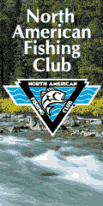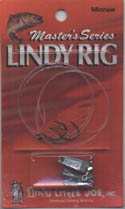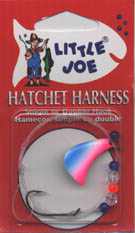
|
|||||
|
Promotional Team Favorites Lodging food and more 
|
By Sam Anderson The radio station the other day was playing My Town, by Montgomery Gentry. I was caught up in the lyrics of the song and of course I thought that many of the statements were true. But, more importantly as a walleye angler, I thought that we sometimes don't realize that the walleye lives in "Their Town". The analogy might seem strange, but if you stop and think about where the walleye lives, and where they go, you might be surprised to find them in a My Town of their very own. People often mistakenly go on a lake and look at it as a big fish bowl, but fish only hold in certain areas. So the key is to locate areas where walleyes live on a seasonal basis. Many fishermen are tying to cover too much water too fast and aren’t spending enough time in specific areas that hold fish. I always pick 3 or 4 spots that look good on a map and concentrate on them. For example, a sunken island may have a series of spots where the bottom changes from one type to another. Transitional zones might be changes from hard to soft, or sand to rock. These zones are just subtle changes and they could be a very narrow band on a specific piece of structure. Often a point or inside bend is present, too. Most anglers tend to fish the whole structure. Concentrate your efforts on the 2 or 3 key spots rather than fishing a whole flat or a whole sunken island. When checking a potential spot, I run at a certain depth and then look for baitfish. If I get too deep I turn in to shallower structure. And, when it gets too shallow I will turn out to deeper water. By following this simply piece of advice you will find points and inside bends on a specific structure. Plus, my depthfinder will locate these transitional areas that are either hard or soft. This is just as magical as the points or inside turns that you discovered while making passes over them. Many anglers think of rocks, sand, drop-offs, and deep water when walleye fishing. But walleye chasers are missing some good fishing if they aren’t poking around in the weeds when they’re after walleyes, especially during the summer months. Walleyes will make extensive use of weed clumps if they’re available, and often the fish that are in the weeds are looking for a meal, making them susceptible to any type of offering. First of all, what type of weeds will hold walleyes? Coontail will hold a few fish, and on some lakes will be pretty good. But my favorite vegetation, day in and day out, will be cabbage weed. Cabbage is abundant on many bodies of water, and will also be the feeding grounds for bass, northerns, muskies and panfish. I’ve found the best weed beds for walleyes will be located at the edge of a drop-off and extend over the flats into shallower water. At times the fish will be down the drop-off a little, but frequently they will be up on the flat right in the middle of the weeds. Fish are wary. This helps them survive and can also make them difficult to catch. They utilize their excellent senses of vision and hearing, detect motion with unerring accuracy using their lateral line, and also use their sense of smell. Therefore, a cautious approach is required of an angler. With either natural bait or artificial lures, the presentation must be realistic. It should appear that the offering is part of the normal food chain. Hunger is certainly a major motivating factor, but fish also respond as predators and strike something that moves. At times, they even exhibit antagonistic behavior when biting an intruder to drive it away. A couple of other overlooked things like sun and wind are also big factors on some of these points. I fish a point or flat on the side where the wind is blowing into most of the time, unless there is a sharp drop off or some type of rock structure to hold fish on the opposite side. Usually, walleyes will be lying in an area where the wind is blowing water onto a structure. In clear water lakes under bright conditions, look for the shaded area on a piece of structure. Many times anglers get caught up in a certain type of fishing. These people might retrieve a jig the same way or troll a crankbait at one speed. Also many anglers use pre-tied live bait rigs with a standard snell when the fish are 3 feet off the bottom.
When fish are suspended 1 1/2 to 5 feet off the bottom, the length of the your snell, the position of your boat, and the presentation speed are important. Many times, you have to stop and work the bait slowly through the fish. At times, I’ve had my best luck with an almost motionless presentation. And, by changing the length of the snell you can get fish on the bottom or suspended. In fact, you could anchor, cast out and let the leech or crawler do its thing. This is a great method for catching spooky or inactive walleyes. Backtrolling is something that I really enjoy. Backtrolling will allow you to present your bait right in front of the walleye's nose. In cold front conditions this is essential. What you're trying to do is stay on a particular depth, or contour, where it looks like the walleyes are holding. If it's very windy I use my 15 H.P. Mercury and back into the wind along current breaks. This slows down the bait and gives the walleyes plenty of opportunity to decide if it is something they would like to eat. If I hook a fish on an inside turn, I quickly throw out a marker buoy and as soon as I am done landing that fish I will move right back to that spot. The thing to remember is if you catch one active walleye in a spot there are probably a dozen or so walleyes in that same spot. When the particular structure is shallow don't hesitate to use the slip bobber method.
Vertical jigging is very popular, and the key to fishing a jig vertically in current, is boat control. Work these areas over with a controlled drift. The control comes from positioning your boat sideways into the current and using your trolling motors or a "drift sock" to slow down your drift and your presentation. My first and favorite approach to fishing these active fish is drifting. I like to drift through them using my motor to slow down the speed of the drift. Many of you who fish rivers and streams, might refer to this approach as slipping the current, or a controlled drift. If I think I am drifting too fast, I simply increase the throttle and slow down my speed. Or I will attach a Drift Control Sea Anchor to my mid-ship to increase the drag and allow me to stay in the fish zone longer. I hope that you use these techniques next time you hit the water and if you would like more information drop me a line at www.samanderson.com. and we can discuss some other issues that are happening in My Town. Fish Clix Banner Exchange Please visit these site sponsors |
||||
|---|---|---|---|---|---|


